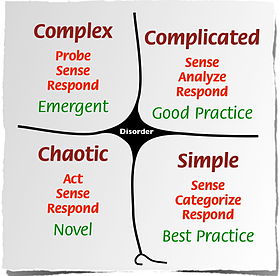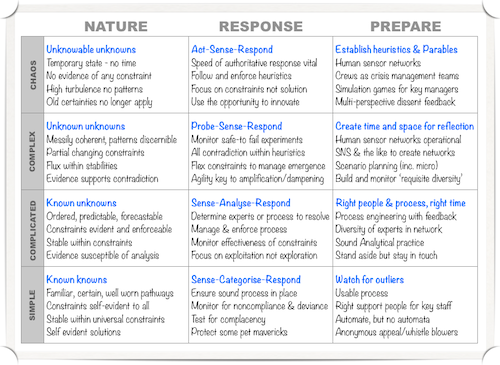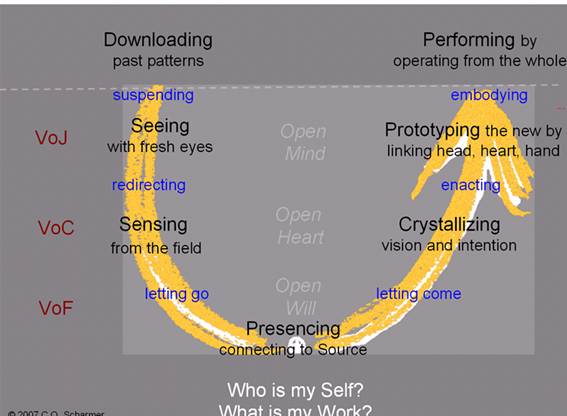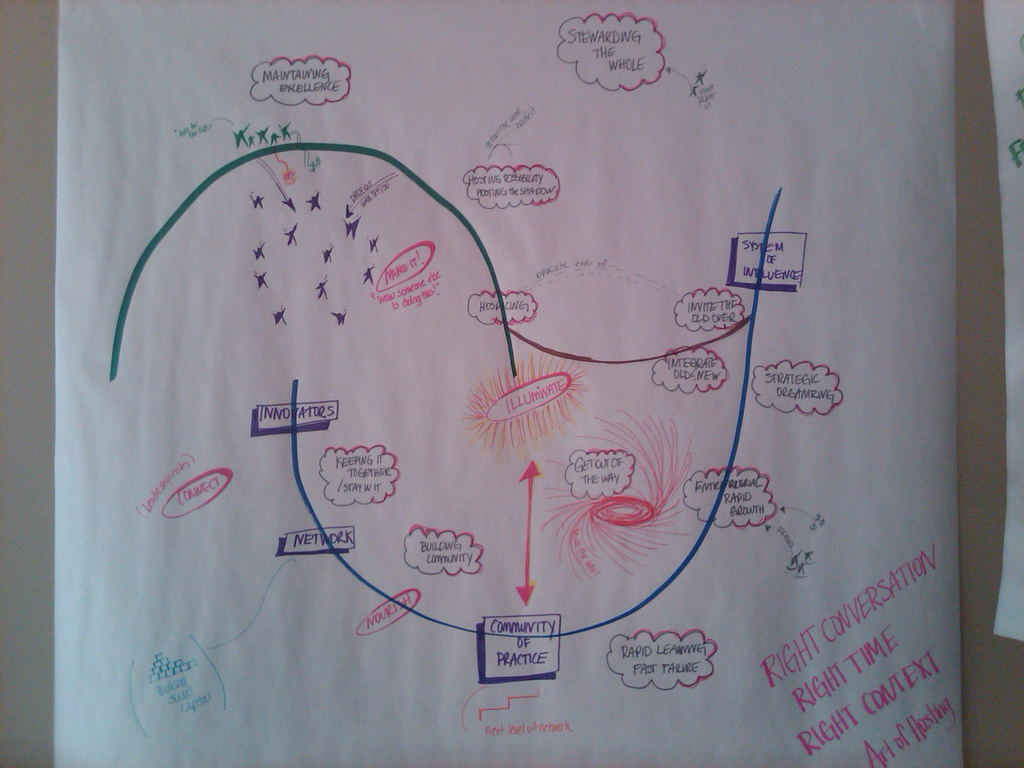Art of Hosting: Additional Concepts
| Cynefin | Theory U | Two Loops | Why ? |
|---|
Cynefin
The Cynefin framework has five domains. The first four domains are:
- Simple, in which the relationship between cause and effect is obvious to all, the approach is to Sense - Categorise - Respond and we can apply best practice.
- Complicated, in which the relationship between cause and effect requires analysis or some other form of investigation and/or the application of expert knowledge, the approach is to Sense - Analyze - Respond and we can apply good practice.
- Complex, in which the relationship between cause and effect can only be perceived in retrospect, but not in advance, the approach is to Probe - Sense - Respond and we can sense emergent practice.
- Chaotic, in which there is no relationship between cause and effect at systems level, the approach is to Act - Sense - Respond and we can discover novel practice.
Here is a summary of how to react:

More here or here.
Go to Top
Theory U
Otto ScharmerThe seven stages consist of:
- (Factual/phenomenal level, technical and instrumental subsystem) Observation of phenomena. How do processes and workflows function? Instruments, resources.
- (Imaginative level, social subsystem) Forming a picture of how the organisation works. Understanding the social subsystem and how functions, roles and management are distributed.
- ("Inspirational" level; cultural subsystem) Idea. Understanding the implicit/actual values, rules and policies that shape the organisation. How and why things happen.
- Is this what we want?
- (This maps onto 3.) What values and guidelines do we want for the future?
- (This maps onto 2.) What does that mean for new functions and roles? How should the organisation of the future be visioned?
- (This maps onto 1.) How can processes be developed in future? What phenomena and facts will characterise the organisation of the future?

Pdf Summary
Go to Top
Two Loops theory
This is Berkana's Theory of Change. I like it because it is simple, elegant, and explains very well not only how the world works, but what our role in it can be as facilitator of change.The theory is that as a system nears its peak, the new system starts being born. People drop out and walk out, innovating something new. Not everyone walks out of the current system, not everyone can. Some are needed to stay behind and maintain excellence as best as they can. I think of school teachers who know so painfully that the system is broken yet return day after day to do their best to support the kids. The leadership role here is to name what is going on with the walk outs, and the realization that others who have also walked out are also doing this contributes to the energy of emergence.

(This was rescooped from Amanda fenton's website)
Two Loops: How Systems Change from Deborah Frieze.
Go to Top
Why are we doing this ?
There is very little to say here, because this is a quetsion you need to ask yourself - and nobody can answer for you.I suggest you watch this video to get some inspiration, specially as to why you need to know why :-):
Go to Top





